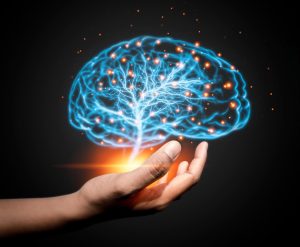Chiropractic and sensory therapies are emerging as crucial components of traumatic brain injury (TBI) recovery. In the book Alternative Treatments to TBI: What Should You Do for Brain Injury Recovery Immediately?, these noninvasive approaches focus on restoring neural function, improving balance, and alleviating post-concussive symptoms. As medical understanding of brain injuries evolves, alternative treatments like chiropractic care and sensory stimulation have gained recognition for their ability to complement traditional medical interventions.
Chiropractic care is pivotal in TBI recovery by addressing spinal misalignments that can affect brain function. The brain and spine are interconnected, and disruptions in spinal alignment can impact neurological pathways. Chiropractic adjustments, particularly those focused on the cervical spine, help relieve pressure on the nervous system, reduce headaches, and improve cognitive clarity. Functional neurology, a specialized branch of chiropractic care, also incorporates neurological rehabilitation exercises that target weak neural connections, enhancing brain plasticity.
One key advantage of chiropractic care for TBI patients is its ability to improve blood flow and oxygenation to the brain. Proper spinal alignment ensures optimal circulation, essential for delivering nutrients and oxygen needed for brain healing. Patients who receive chiropractic adjustments often report reduced brain fog, improved memory, and enhanced concentration.
Sensory therapies are equally vital in TBI recovery, as they retrain the brain’s ability to process information. Techniques such as vestibular rehabilitation, visual stimulation, and proprioceptive exercises help individuals regain coordination and balance. Vestibular rehabilitation involves controlled head and eye movements that stimulate the brain’s balance centers, helping reduce dizziness and motion sensitivity. Visual therapy, which includes tracking exercises and light exposure, assists in recalibrating visual processing functions often impaired after a brain injury.
Tactile and auditory therapies also contribute to neural restoration. The brain responds to various stimuli, and controlled exposure to sound frequencies, vibrations, and tactile inputs can encourage new neural connections. These therapies are particularly effective for individuals experiencing sensory hypersensitivity or difficulty focusing and coordination.
Integrating chiropractic care and sensory therapies provides a comprehensive approach to TBI recovery. While traditional medicine focuses on symptom management, these alternative methods actively support neurological repair and functional restoration. By realigning the spine, enhancing circulation, and retraining sensory processing, chiropractic, and sensory therapies empower individuals to regain cognitive function, physical stability, and overall well-being.
As awareness of alternative TBI treatments grows, more individuals embrace holistic healing. Chiropractic care and sensory therapies offer promising pathways for recovery, providing a natural, patient-centered approach to brain injury rehabilitation. Dr W John Jung provides a roadmap to the patients suffering from such a disease and to every individual out there to follow steps and guidelines when dealing with such a disease. The battle can be tough, but there is recovery for every medical disease.




